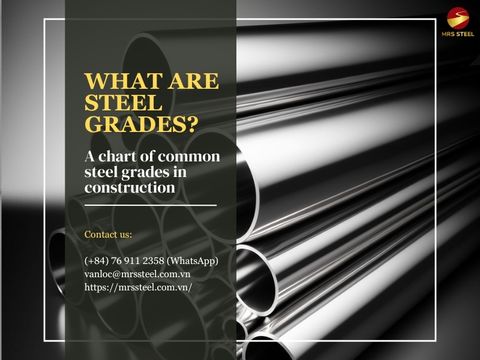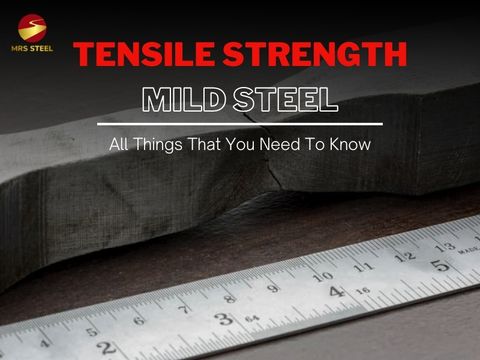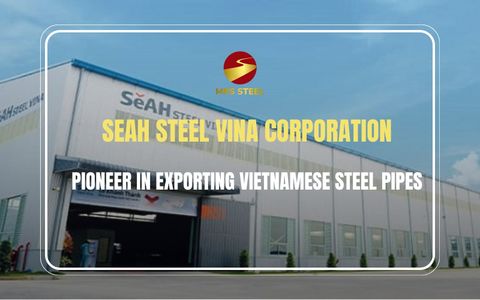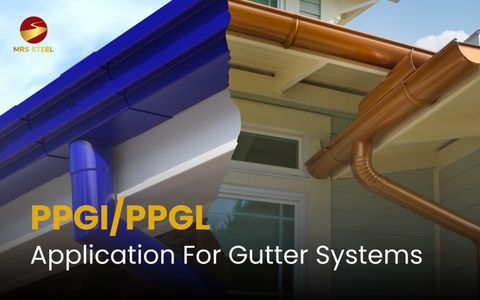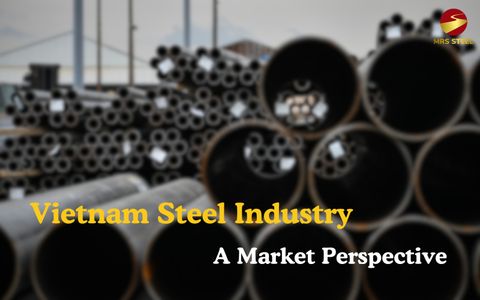Steel in Modern Architecture: A Sustainable and Aesthetic Material

BlogDate: 02-10-2023 by: Ngoc Cam
Architecture is a unique art that combines creativity, science and technology to create a safe, sustainable, cultural, and humane living space. Architecture is a mirror reflecting the times, associated with economic and social life features. The modern architectural design of the 21st century is marked by minimalism, environmental friendliness, and high applicability. In this article, MRS Steel will introduce steel in modern architecture – an innovation to lead.
1. Selection of steel structure for buildings of the century
Structural steel is the first choice for construction projects because an architect can create many “masterpiece” designs thanks to the advantages of this material:
Durability
Steel properties, including strength, toughness, flexibility, weldability, and durability, make the building frame solid, not deformed, and withstand heavy loads. Structural steel can span significant distances compared to standard building materials, resulting in staggering cost savings.
Anticorrosion
Anticorrosion paint protects metal from corrosive elements, environments such as chemical tanks, acids, harbors, humidity, wind and rain, etc. The durable coating with a lifespan of up to 20-30 years helps investors save maximum time and maintenance costs.

Flexible design
Another property of steel is its flexibility in forming, designing, customizing, and manufacturing almost every building component, from the largest to the smallest detail. In addition, steel structure is also easy to transport and serve works anywhere in the world.
Sustainability
According to research, using steel frames in architectural works contributes to reducing carbon emissions to the environment. Therefore, using steel in modern architecture brings sustainability to life and is environmentally friendly.
2. What types of steel are used in modern architecture?
Parallel Flage Channels
Parallel Flange Channels, also known as PFC, U-channels, structural channels, or simply channels, are essential materials to support structures and increase project strength and durability.
They come in various sizes, are constructed with two equal parallel sides, and have a high strength-to-weight ratio. PFC in modern architecture specializes in making door frames, vehicle frames, roofing sheets, wall structures, supporting floor beams,..

Tapered Flange Beams
Tapered Flange Beams are I-beams or rolled steel joists commonly used for beam cross-sections, supporting civil, commercial, or industrial construction projects due to their high resistance ratio.
Universal Beam
Universal Beam & Columns, also known as I-beams or H-beams, are made of structural steel. They have a high load capacity, making them the ideal material for columns, construction works, and several other industries.
Angle Steel
Angle steel is "L" shaped structural steel sections. The angled legs are equal or unequal; the more significant the steel angle, the better the resistance to weight and stress. Angle sections are used for many different purposes, such as housing construction, transportation works, and infrastructure,... Customers can request production with many various lengths and sizes.

Hollow sections
Hollow sections are metal structures made from cold rolled steel and formed into hollow tubes. The feature of hollow sections is an open edge extending over the entire steel bar with various shapes such as round, square, rectangular, and various sizes according to ASTM A500, A1085, and A1065.
They have a high strength-to-weight ratio, good bearing capacity, and economy, making them the essential materials for many projects such as:
- Fences and railings
- Bearing floor
- Bridges
- Stair
- Heavy machinery
- Household appliances
- Barns, warehouses
Flat sections
A flat section connects beam panels (base plate, end plate, spacer, joint) together. In some cases, they are attached to other components that increase durability.
3. The beauty of steel in modern architecture
Modern architecture emphasizes function over form, so steel buildings meet the high demand for use and bring a strong and personal aesthetic. Some features of the architectural style using steel are as follows:
Emphasize minimalism
Modern architecture focuses on usability, designing simple and definitive lines with elegant decoration, focusing on spacious and reasonable structure.

Using modern materials
The current architecture captures the aesthetic trend of users, so choose modern materials and new technologies such as reinforced concrete, steel, glass,... These materials all have advantages in durability, fast construction time, brings luxury and class beauty.
Easy to combine with other materials
Using steel in modern architecture has the advantage that it is easy to combine with many other materials, such as wood and stone, ... without losing the overall harmony.
Take advantage of the area and natural light source
Steel constructions can make the most of the area, creating an open space with large windows and glass walls.




























